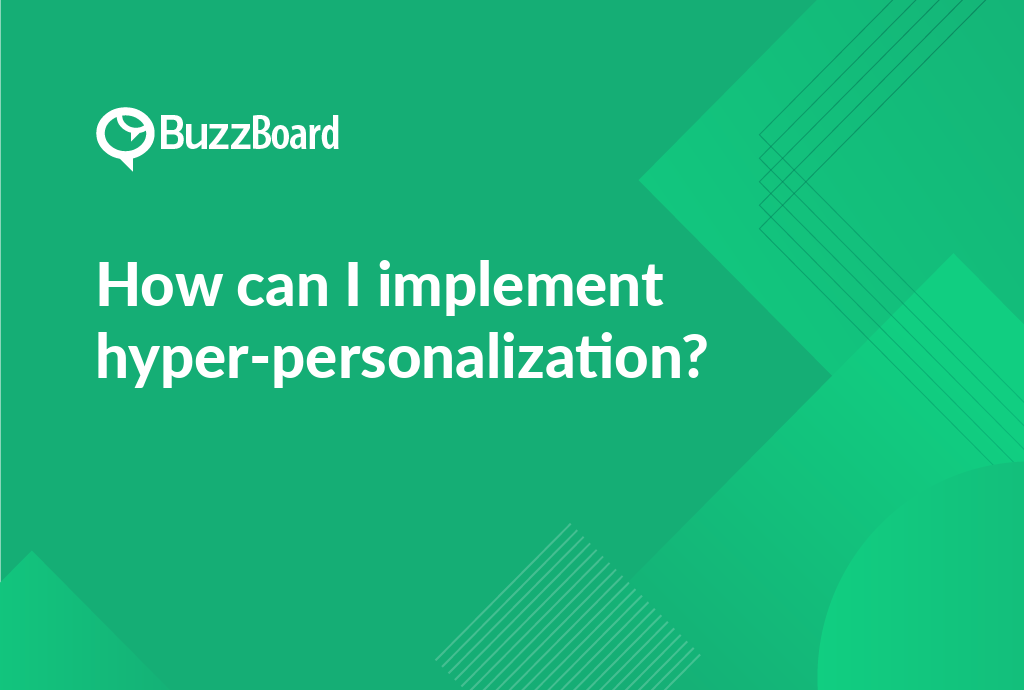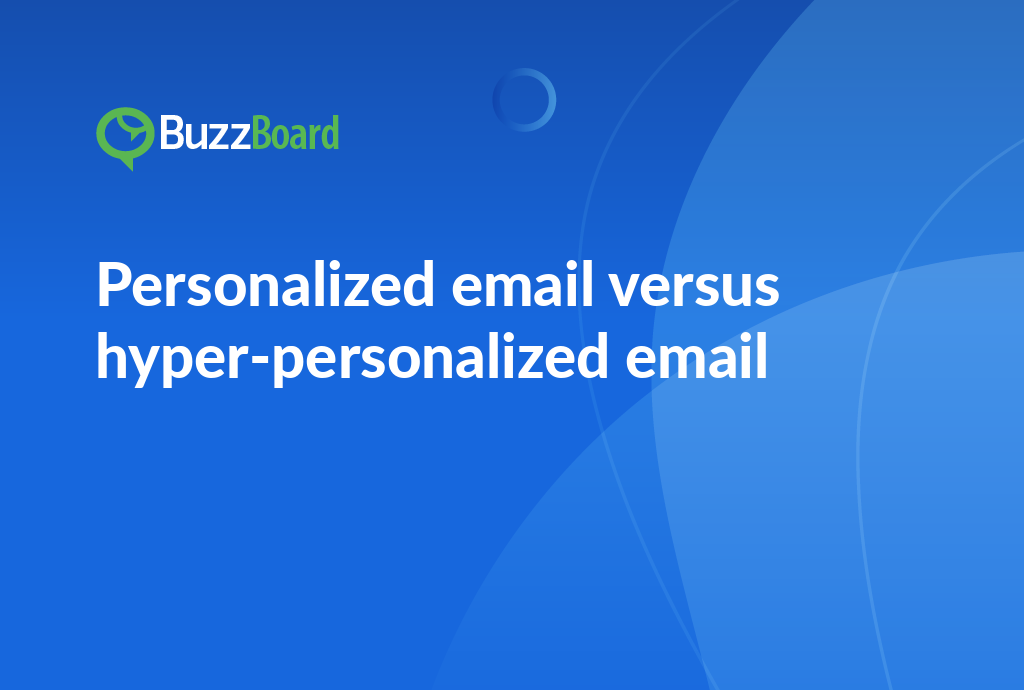Implementing hyper-personalization requires a data-driven approach that combines customer data, behavioral insights, and real-time interactions. Start by collecting and integrating customer data from various sources, including CRM, social media, and purchase history. Use machine learning algorithms to analyze this data and identify patterns, preferences, and behaviors. Then, leverage this insights to create personalized content, offers, and experiences that resonate with each individual customer. Finally, continuously monitor and refine your hyper-personalization strategy to ensure optimal results and stay ahead of the competition.
Introduction to the Importance of Hyper-Personalization in Modern Digital Marketing
In today’s rapidly evolving digital landscape, the value of hyper-personalization cannot be overstated. This groundbreaking strategy enables marketing agencies to target customers more finely, increasing engagement and boosting conversion rates. Considering the overwhelming amount of digital content consumers face, personalization has become more than a mere courtesy, it’s essential for businesses striving to stay competitive.
Hyper-personalization is particularly significant for small and local businesses looking to compete with larger, more recognized brands. With the aid of big data, these businesses can provide personalized customer experiences that overcome the usual limitations of scale and reach. A report from the Boston Consulting Group reveals that businesses implementing hyper-personalization strategies experience revenue gains of 6-10%, which is two to three times faster than those that do not.
Implementing hyper-personalization in your organization can be a complex and multifaceted process that requires a significant amount of time, resources, and effort. It demands a deep commitment from the entire organization, including top-level executives, to drive the initiative forward. This commitment is essential to ensure that all stakeholders are aligned and working towards the same goal of delivering a hyper-personalized experience to customers.
One of the primary challenges of adopting hyper-personalization is the need for substantial investment in data collection and analytics. This requires the development of robust data management systems, as well as the integration of various data sources and tools to collect, process, and analyze large amounts of customer data. Additionally, organizations must have the necessary expertise and resources to interpret the insights gained from data analysis and make informed decisions about how to apply them to improve the customer experience.
Another critical aspect of hyper-personalization is the need for agility and adaptability. Consumer preferences and behaviors are constantly evolving, and organizations must be able to quickly respond to these changes to remain competitive. This requires a culture of continuous learning and experimentation, where teams are empowered to test new approaches, measure their effectiveness, and make adjustments as needed.
Despite these challenges, adopting hyper-personalization can offer a significant competitive edge for organizations that are able to successfully implement it. In particular, sales representatives who are skilled in explaining the benefits of hyper-personalization to less tech-savvy individuals can play a crucial role in driving adoption and ensuring that customers understand the value of this approach.
By adopting hyper-personalization, organizations can create a more fruitful and sustainable customer-business relationship. This is because hyper-personalization enables businesses to tailor their offerings and communications to the unique needs, preferences, and behaviors of individual customers. This can lead to increased customer satisfaction, loyalty, and retention, as well as improved conversion rates and revenue growth.
To get started with hyper-personalization, organizations should begin by assessing their current capabilities and identifying areas for improvement. This may involve conducting a thorough analysis of their data management systems, analytics capabilities, and customer engagement strategies. From there, they can develop a roadmap for implementing hyper-personalization, which may involve investing in new technologies, training employees, and developing new processes and procedures.
Ultimately, the key to successful hyper-personalization is to approach it as a long-term strategy that requires ongoing investment and commitment. By prioritizing customer needs and preferences, and continuously adapting to changing market conditions, organizations can create a competitive advantage that drives business growth and success.
Explanation of Hyper-Personalization Concepts, Its Benefits and Effects on Revenue and Customer Retention
Hyper-personalization is revolutionizing the world of customer marketing, offering a sophisticated approach that goes beyond traditional marketing methods. This cutting-edge strategy leverages both user behavioral data and real-time interactions to deliver uniquely individualized experiences across various platforms, including websites, apps, emails, and more. By employing advanced analytics tools and customer relationship management systems, businesses can gather rich, detailed data points about their customers, such as shopping behavior, personal preferences, and feedback.
With hyper-personalization, marketing agencies can finely tailor their content, product recommendations, and services according to individual preferences, leading to a significant shift in customer engagement and retention. This personalized approach enables businesses to understand and fulfill unique customer needs, fostering more profound relationships and ultimately leading to enhanced customer loyalty and lasting retention.
The benefits of adopting hyper-personalization are substantial and far-reaching. One of the most notable advantages is the improved customer experience, which is directly linked to increased revenue generation. By understanding and fulfilling unique customer needs, businesses can create a sense of belonging and connection with their customers, leading to increased customer satisfaction and loyalty. This, in turn, can result in higher customer retention rates, reduced churn, and increased customer lifetime value.
Moreover, the impact of hyper-personalization on revenues is significant. According to a study by Boston Consulting Group, companies offering personalized experiences see a revenue jump of 6% to 10%. This is because personalized experiences lead to increased customer engagement, higher conversion rates, and increased customer loyalty, ultimately driving revenue growth.
As businesses aim for customer-centricity, the adoption and implementation of hyper-personalization could be a pivotal strategy in digital marketing. To execute this strategy effectively, early steps should focus on effective data collection and understanding evolving trends. This involves gathering and analyzing large amounts of data from various sources, including customer interactions, social media, and online behavior.
To achieve this, businesses should invest in advanced analytics tools and customer relationship management systems that can help them collect, analyze, and interpret large amounts of data. Additionally, businesses should prioritize data quality and accuracy, ensuring that the data they collect is reliable and up-to-date.
Once the data is collected and analyzed, businesses can use it to create personalized experiences that cater to individual customer needs and preferences. This can be achieved through various channels, including email marketing, social media, and content marketing. By delivering personalized experiences, businesses can create a sense of connection and belonging with their customers, ultimately driving customer loyalty and retention.
Hyper-personalization is a powerful strategy that can help businesses create a more customer-centric approach to marketing. By leveraging advanced analytics tools and customer relationship management systems, businesses can gather rich, detailed data points about their customers and deliver uniquely individualized experiences. The benefits of adopting hyper-personalization are substantial, including improved customer experience, increased revenue generation, and enhanced customer loyalty and retention. As businesses aim for customer-centricity, the adoption and implementation of hyper-personalization could be a pivotal strategy in digital marketing.
Understanding Prerequisites for Successful Implementation of Hyper-Personalization Using Key Digital Marketing Tools
For sales representatives at digital marketing agencies, understanding the prerequisites for successful implementation of hyper-personalization using key digital marketing tools is a crucial step in delivering effective solutions to clients, particularly small and local businesses. Hyper-personalization has the potential to revolutionize the way these businesses approach their marketing efforts, allowing them to tailor their messages and experiences to the unique needs and preferences of their target audience. However, before diving into the implementation process, it is essential to consider the following critical prerequisites.
First and foremost, the accumulation and interpretation of relevant consumer data are vital components of a successful hyper-personalization strategy. This data can provide valuable insights into customers’ behaviors, preferences, and values, allowing for precise targeting and personalized messaging. To achieve this, sales representatives should utilize advanced digital marketing tools designed for data gathering and interpretation, such as customer relationship management (CRM) software, data analytics platforms, and machine learning algorithms. These tools can help identify patterns and trends in customer behavior, enabling businesses to create targeted campaigns that resonate with their audience.
Secondly, understanding the customer journey is a necessity for implementing hyper-personalization. Accurately mapping the customer journey involves identifying the various touchpoints and interactions that a customer has with a brand, from initial awareness to conversion and beyond. This understanding is crucial for determining when and how to engage consumers with personalized content, offers, and experiences. By mapping the customer journey, businesses can identify opportunities to personalize the customer experience, increase engagement, and drive conversions.
Finally, a well-defined strategy is essential to guide the entire process of using hyper-personalization. This strategic plan should inform all decisions, from data collection strategies to content delivery platforms, and should be aligned with the business’s overall marketing goals and objectives. A comprehensive strategy should also take into account the technical infrastructure and resources required to support hyper-personalization, including data storage, processing, and analytics capabilities.
By grasping these prerequisites, sales representatives can ensure a successful implementation of hyper-personalization in their digital marketing efforts. This includes:
- Developing a data-driven approach to understanding customer behavior and preferences
- Mapping the customer journey to identify opportunities for personalization
- Creating a comprehensive strategy that aligns with business goals and objectives
- Utilizing advanced digital marketing tools to gather and interpret data
- Ensuring technical infrastructure and resources are in place to support hyper-personalization
By following these best practices, sales representatives can help their clients achieve a competitive edge in the market, drive business growth, and build strong, lasting relationships with their customers.
Step-by-Step Guide on the Process of Implementing Hyper-Personalization in Marketing Campaigns
To effectively incorporate hyper-personalization into your marketing campaigns, following a systematic process is crucial.
Step 1: Data Collection
Hyper-personalization’s foundation relies on customer data. Begin by accumulating and organizing customer data from a slew of sources, such as websites, social media, and CRMs. Adhere to your organization’s data privacy protocols during this phase.
Step 2: Segmentation
Use the gathered data to form customer segments based on shared attributes or behaviors. This could be demographics, psychographics, or specific actions taken on your website.
Step 3: Content Creation
Develop personalized content for each segment. Ensuring that the content genuinely resonates with the targeted segment is crucial for this phase.
Step 4: Channel and Communication
Choose the most effective channel to deliver this content, it could be email, in-app notifications, SMS, or social media. Decide on a communication method—custom messages, personalized offers, or improved product recommendations.
Final Step: Testing and Optimization
Monitor the success of your hyper-personalized campaigns and adjust as required. Consistent testing can reveal what is most effective for your audience, helping you refine your efforts for maximum impact.
In the journey of utilizing hyper-personalization, seamless integration is of utmost importance. It promotes better adaptation and enhances the potential of your marketing strategies.
Keep in mind, implementing hyper-personalization is not a one-time process. It demands a continuous commitment to learning and adapting.
Case Studies Showcasing Adoption of Hyper-Personalization by Digital Marketing Agencies and Its Influence on Their Success
The digital marketing landscape is witnessing a significant shift towards hyper-personalization, and for good reason. By leveraging advanced technology and real-time segmentation strategies, agencies are able to create tailored experiences that resonate deeply with their target audience, leading to impressive boosts in customer engagement and sales.
One notable example of this trend is Zaius, a B2C marketing firm that has successfully integrated hyper-personalization into their digital marketing strategy. By leveraging advanced technology and real-time segmentation strategies, Zaius was able to create highly targeted and personalized experiences for their customers. The result was a significant enhancement of the customer experience, leading to increased customer loyalty and revenue growth.
Another example of the power of hyper-personalization is Bound, a marketing agency that specializes in working with major hospitality brands. By using customer data to tailor content according to demographic and psychographic variables, Bound was able to create highly personalized experiences that spoke directly to their target audience. The result was a significant uptick in conversion rates, further proving the benefit of personalizing engagement beyond one-size-fits-all messages.
These examples illustrate the transformative power of hyper-personalization, and demonstrate the potential for significant returns on investment for businesses that adopt this strategy. As such, sales representatives at digital marketing agencies targeting small and local businesses should strongly consider recommending the incorporation of hyper-personalization into their clients’ digital marketing strategies.
By doing so, agencies can help their clients strengthen their connections with their target audience, and promote business growth through the creation of highly targeted and personalized experiences. This can be achieved through a variety of tactics, including:
- Using customer data to create highly targeted and personalized content
- Leveraging advanced technology and real-time segmentation strategies to create tailored experiences
- Using demographic and psychographic variables to tailor content and messaging
- Creating personalized experiences that speak directly to the target audience
By incorporating these tactics into their digital marketing strategies, small and local businesses can reap the benefits of hyper-personalization, including increased customer engagement, improved conversion rates, and ultimately, increased revenue growth.
In addition, hyper-personalization can also help businesses to:
- Increase customer loyalty and retention
- Improve brand awareness and reputation
- Enhance customer satisfaction and overall experience
- Drive business growth and revenue
Overall, the benefits of hyper-personalization are clear, and businesses that adopt this strategy are likely to see significant returns on investment. As such, sales representatives at digital marketing agencies should strongly consider recommending the incorporation of hyper-personalization into their clients’ digital marketing strategies, and work with their clients to develop a personalized approach that meets their unique needs and goals.
Conclusion
Implementing hyper-personalization requires a strategic approach that combines data-driven insights, advanced technology, and a deep understanding of customer behavior. By leveraging customer data, machine learning algorithms, and real-time analytics, businesses can create personalized experiences that resonate with individual customers. The key takeaways from this article are:
- Start by understanding your customers: Gather data on customer behavior, preferences, and demographics to create a comprehensive customer profile.
- Use machine learning algorithms: Leverage machine learning algorithms to analyze customer data and identify patterns and trends that can inform personalized experiences.
- Integrate with existing systems: Integrate hyper-personalization with existing systems, such as CRM and marketing automation platforms, to ensure seamless data flow and efficient execution.
- Focus on real-time analytics: Use real-time analytics to track customer behavior and adjust personalized experiences accordingly.
- Prioritize customer consent: Ensure that customers are aware of and consent to the use of their data for hyper-personalization.
- Continuously monitor and improve: Continuously monitor the effectiveness of hyper-personalization efforts and make adjustments as needed to optimize results.
By following these steps, businesses can successfully implement hyper-personalization and create personalized experiences that drive customer engagement, loyalty, and ultimately, revenue growth.








